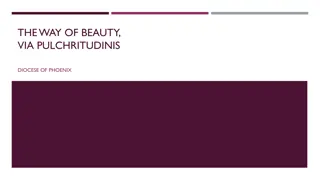Explore Nature's Beauty with EXON: A European Project Showcase
Discover a collection of fascinating plant species in Europe, including the elegant Spring Snowflake, rare Snake's Head Fritillary, vibrant Telekia, iconic Edelweiss, and toxic Common Yew. Each plant's unique features and habitats are highlighted with stunning images.
Download Presentation

Please find below an Image/Link to download the presentation.
The content on the website is provided AS IS for your information and personal use only. It may not be sold, licensed, or shared on other websites without obtaining consent from the author. Download presentation by click this link. If you encounter any issues during the download, it is possible that the publisher has removed the file from their server.
E N D
Presentation Transcript
EXON Explorers of Nature Erasmus+ EU Project 2017-2020
Spring Snowflake Leucojum vernum is a perennial bulbous plant species in the family Amaryllidaceae . Its stem is 12 35 cm tall and has a single white flower with greenish or yellowish marks near the tip of each tepal. It occurs in central and southern Europe in damp forests or in parks. The flowers appear in spring and grow in groups.
Snake's head fritillary / Fritillaria meleagris / It grows on non-fertilized wet meadows that are not mowed before early June. It is a rare, critically endangered and protected species. In Slovakia it occurs in the East Slovakian Plain and around Vihorlat. It is very sensitive to dewatering and fertilization. The plant is 15-40 cm tall. The leaves are simple. The flower is bell-shaped, sagging, not fragrant, the petals are red-violet, mottled and the fruit is a capsule.
Telekia / Telekia speciosa/ It belongs to perennial herbs; the vegetation period persists with a rough cylindrical rhizome. From the underground organ grows a thick straight stem with short hairs that grows to a height of 90 - 200 cm. A good distinguishing feature are the large heart-shaped leaves with a serrated edge. At the end of the staggered stalks grow seemingly large yellow blooms. Flowers are visited by various kinds of insects, which also pollinate them. Telekia is one of the symbols of the nature reserve of Vihorlat.
Edelweiss /Leontopodium alpinum/ It is the most famous alpine plant. It is a perennial herb. Straight, thinly leafed stem with narrow lanceolate leaves is about 5 - 30 cm high. It is topped with one to three white flowers in dawn. The colour of the flowers is white to yellow- white, the flowers are felted, covered with fine hairs. The function of hairs is to protect the plant against UV radiation. The plant is protected.
Common snowdrop It occurs in floodplain or wet forests on nutrient soils. Spring plant that often blooms in the snow as well. Flowers can endure frost. From onion grows a scape and two simple leaves. The scape carries a white flower with an intense aroma. It flowers from February to March and the fruit is a capsule. The plant is poisonous, the most toxic part is onion. Poisoning by this plant causes stomach-intestinal problems.
Common yew Taxus baccata is a medium sized, evergreen conifer. It is the longest living plant. Bright red, berry like fruits ripen in the autumn and are attractive to birds during the winter. Most parts of the plant are toxic, particularly if foliage is eaten by animals.
European white water lily /White nenuphar It is an aquatic flowering plant of the family Nymphaeaceae. It grows in water that is 30 150 cm deep and likes large ponds and lakes. The leaves can be up to 30 cm in diameter and they take up a spread of 150 cm per plant. The flowers are white and they have many small stamens inside. It is found all over Europe in freshwater.
The round-leaved sundew Drosera rotundifolia, the round- leaved sundew or common sundew, is a species of sundew, a carnivorous plant often found in bogs, marshes and fens. A typical plant has a diameter of around 3 to 5 centimetres, with a 5-to-25- centimetre tall inflorescence. The flowers grow on one side of a single slender, hairless stalk that emanates from the centre of the leaf rosette. White or pink in colour, the five-petalled flowers produce light brown, slender, tapered seeds.
"Clusius' gentian Gentiana clusii (sometimes called "Clusius' gentian") is a large-flowered, short- stemmed gentian, native to Europe.
Alpine Aster Aster alpinus is an ornamental plant native to the mountains of Europe . It is a perennial forb having purple, pink or blue flowers belonging to the genus Aster. It grows very slowly in clay, silt, loam, silty clay, sandy clay etc. types of soil. It grows to be about 15-30cm tall . The bloom color may be pink, violet-lavender, dark purple-black, or white-near white and may bloom in late spring or early summer or, occasionall.

















































